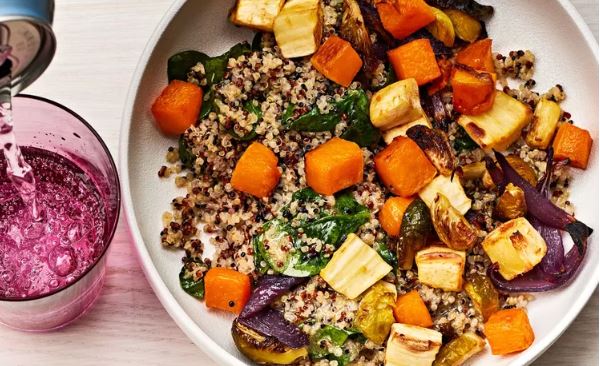Looking to drive a healthier weight, get stronger or simply feel healthier?
Protein will be your new best friend. Protein builds muscle, keeps your hunger in check and strengthens your hair, skin and nails.
But packing more of the good stuff into your routine can feel easier said than done. Especially if you struggle to find time to cook meals from scratch or have recently gone vegan.
So here’s how you can sneak more protein into your everyday diet – quickly and conveniently – and feel way better for it.
1. Prep for meals throughout the week
Prepping your favourite protein options ahead of time can make it simple to add them to future meals. Store pre-prepped proteins in the refrigerator and then reheat them to add to salads, casseroles, tacos, and other items throughout the week.
Just be sure to follow food safety rules to avoid getting sick if you’re working with meat.
After you’ve cooked a protein, refrigerate it promptly as bacteria can multiply if it’s left out at room temperature. It can then safely remain in the refrigerator for three to four days before it needs to be thrown out.
2. Use nuts and seeds in plant-based recipes
Nuts and seeds are convenient, ready-to-eat sources of protein that can be enjoyed on their own as a snack or added to dishes like salads to boost their protein content.
The protein content of nuts and seeds varies, but pumpkin seeds, almonds, pistachios and hemp seeds are among the best sources.
3. Start your morning with eggs
Rise and shine! Scrambling up some eggs is the perfect way to start your day with protein. Egg protein is highly digestible and is an excellent source of essential amino acids.
A protein-rich breakfast keeps you fuller for longer, so you’ll be less likely to need that mid-morning snack. And there are other benefits of adding protein to your first meal of the day, along with the others.
A high-protein breakfast may help to better regulate your blood sugar levels throughout the day, for example.
4. Use bone broth instead of water when cooking grains
Bone broth is higher in protein compared to regular broth. Bone broth is simmered longer than regular broths, so more protein is extracted from the animal bones. This results in a more flavourful product that’s rich in protein.
Bone broth can be used to cook grains like rice and quinoa and as a protein-rich base for soups. It can also be enjoyed as a satisfying hot beverage.
